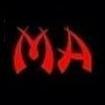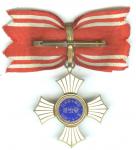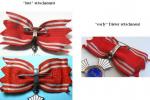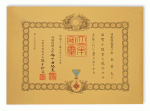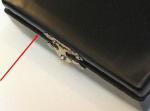-
Posts
22,214 -
Joined
-
Last visited
-
Days Won
68
Content Type
Profiles
Forums
Blogs
Gallery
Events
Store
Everything posted by JapanX
-
Exactly because of economical upturn in the first half of 50s (I think this is one of the factors) Japan decided to restore its awarding system. Here is restoration chronology. 18 September 1953 Merit Medals were restored. 22 January 1955 two new Merit Medals (yellow and purple ribbon) were introduced. 1 April 1956 golden RC order and golden RC medal were introduced. 12 June 1963 Sacred Treasure and Rising Sun orders were restored.
-
So what is exactly this “not peach and creamy” time? In concordance with my information Japan in 1957 held 1st place in the shipbuilding (I heard that this is quite metal consuming industry, though 99% of all iron ore and nonferrous metals were imported) 1st place in fishing 1st place in production of ceramics 1st place in production of raw yarn 2nd or 3rd place in rice production 2nd or 3rd place in production of ceramics 2nd or 3rd place in production of photo equipment and radios 2nd place in production of engineering tools et cetera, et cetera, et cetera… Held place where? In the world! Not bad! Not bad at all! So where we were? Attachment economies? For real? Of course they don`t! They could afford it back in 1956!
-
I am inclined to think that marks referred to different places of manufacture. To be more exact - different workshops. Why? Same style of production = same mark Usually this equality holds pretty perform well enough. Something strage is going on only with marks on red cross medals. Very strange. Way too many marks and they don`t correlate with the time period (you can meet wwII medals with marked tabs! they even manufactured from different alloys). It looked like old tabs (from Meiji-Taisho) were used for new medals (war Showa). Very strange. At least it looks strange ..
-
-
So the different katakanas give us information about years of manufacture. Hmmmmm But then we should have at least 40 different mint marks and we don’t have even 10 (with all red cross medals no more than 15 for sure). And why not all the orders were marked? And why one mark you can meet more frequent than the other? And why use katakana and latin letters? If there was a time-mark-chart (as we have for Finland orders) that I think it should be unified. Don`t you think so? I personally have serious doubts that marks were used as time marks.
-
The real question is not “when”, but “what for” If we’ll answer on the second question, then we’ll answer on the first. What is the real meaning and purpose of Japanese order marks? I understand why Soviet Mint marked its orders (proof of identity+quality control) and why Germans manufacturers (guild regulations + government regulations). But why Osaka Mint? Ok. Maybe before 1929 there was some non-government guild regulation or (what is more probable) it’s just makers pride, prestige and some kind of guarantee. But why Osaka mint continues to mark orders after 1929?! For prestige? Don’t think so. Quality control considerations stands no longer because all orders have one unified stamped mark M (though some sacred treasure orders have M not stamped but engraved, but still it is M). Dieter hypothesis seems very sound to me. Really why don't all of the orders bear the mark? Very few actually did. By my subjective estimates – between 15% and 35% of all orders of sacred treasure (from Showa epoch of course) and no more than 15% of rising sun orders (in 7 and 8 class of rising sun no more than 30%) have these mark. Maybe it is really because all orders were marked for some time (no more than 10 years) and then the mark has been abolished. The only problem with Dieter hypothesis – before 1929 not all orders which were made by private workshops bear there marks (no more that 30% and for some marks and orders even less). Why?! And maybe Osaka mint continued to mark orders (for some time) because of the simple inertia/tradition affect? And the reason was the same as the reason of private manufacturers? And this reason is still unknown to us.
-
Very interesing hypothesis Dieter! I was thinking about that myself. Yesssssss. This mint marks… Why M appears in the 1929 and disappears soon after the Second World War or even before WWII? There is not a speck of evidence in this case. This is what I think.
-
Hi Peiter, I think that numbers are very accurate. Good job Mr. Nakabori!!!!! !!! I am planing to create a new topic completely devoted to golden kites statistics (including Pacific War period). Hope you will like it Regads, Nick
-
In my post I was talking about 1960-1990 period Sorry, but I desagree. I think that First time M appears (on orders) only in 1929. Then it is in use for the next 40 years (another scenario - for the next 16 years). Current mint marks were reincarnated only for pure technical needs (my point of view).
-
Probably... I think the main problem is for how long this rosette style and attachment were in use... And again I want to bring your attention to the order itself. It`s quality... Excellent as usual... Where "early difficulties"? ;)
-
An again many thanks! Do you have any ideas how they got this numbers? Nick
-
To sum up I am not sure that a) the box is completely legit (I can`t find any direct evidence for that) b) the order and rosette is "after war" (I can`t find any direct evidence for that) Of course this is only my point of view and nothing more. Just trying to sort things out P.S. Sorry for being such pain in the neck Dieter. I really enjoy our discussion :beer:
-
And specially for you Dieter - early style of attachment for Gold Order. What do you think about it?
-
Do you really think this small difference wiIl do it? I have serious doubts...
-
-
Yes I think I`ve heard about this somewhere. But why you think it is exactly 1956-1958 or 1956-1960... Because of the box? But why box came from this period exactly? We don`t have any hard evidence...
-
Very unreliable features! And I don`t think that they substantially evolved during this period (1960-1990). You are absolutely right. Two-letter and two-letter+digit codes. They could be found only on C or D. No, they haven`t. At least I`ve never seen them on Variation B (even mint mark M is missing and this is very strange!). Regards, Nick
-
Here is companion for your beautiful document and order Dieter. 4 class for professor Nakamoto. I think he was awarded about a year ago. Order.
-
I don`t know Dieter ... "Yes, in fact a very similar type of clasp was used in both the silver and gold orders of merit on the cases that I believe were probably some of the first, post-1956 - they are the more narrow type, before the wider type was adopted " I think this is standart clasp for pre-war boxes for badges (naval institute, three-legged crow ....) of higher classes. Nothing special about it. Paul said that he have met such boxes before. Maybe "home-made" was made by a little workshop? I don`t know. And then we are speaking about 1956! Its not that bad year for Japan. At least It`s not 1946. And even if it really so, than why so high quality order in not very quality box? Still have my doubts... Very serious ones And why you are so sure that this piece (I mean the order) can be dated by 1956? Only by attachments for the order and the rosette? I think that they are totally ok. Nothing simplified about them. Of course maybe its just me. But I saw orders with exact attachments in "usual" boxes. Ok. Ok. I know that I am a little mistrustful guy Cheers, Nick
-
So what do with think about my classification attempt Dieter? Especially about dating variation C. You are lucky to have D in your collection!
-
Excellent! Very interesting and important information!!! :beer: Thank you again Pieter! "Meiji periiod cummulatively; first cl 17, second cl 85, third cl 463, fourth cl 2250 and fifth cl 8400. For the Showa period he has only figures for the first and second class, 42 and 210" This is really something! I knew only about meiji numbers for 1 class (yours numbers completely coincide with mine information). 42 and 210 for Showa period Are you sure that this is only Showa numbers? Maybe its a total number of all 1st and 2nd classes during Meiji-Taisho-Showa? Because according to my information total number for 1 classes is 42 (not 41 as Peterson stated in his book). Regards, Nick
-
In last post I mean Showa of course not Taisho... Sorry
-
And what about this spacing?! Does it really looks normal for the japanese order box? I don`t know...


